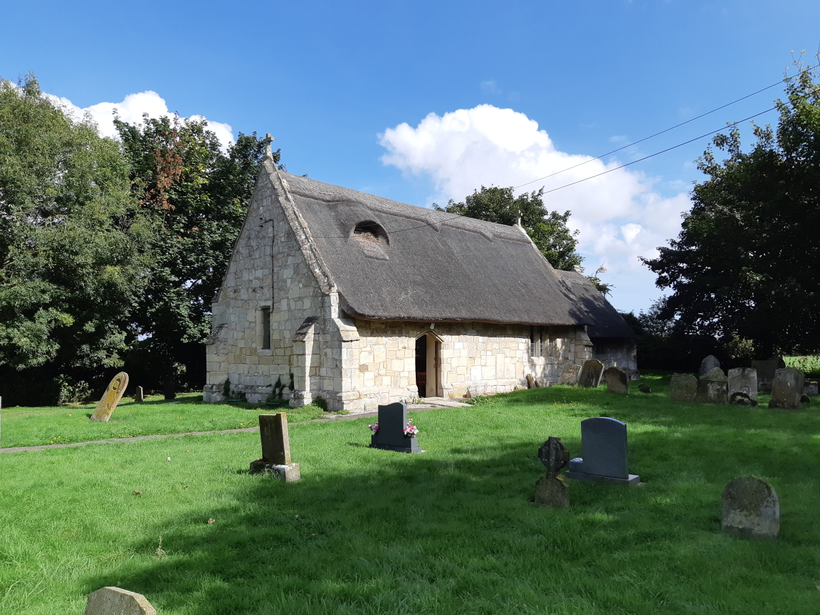Following a death, the list of duties seem endless. From booking the undertaker to choosing the coffin, plot or crematorium, the list of necessities seems endless. But of all of these commitments, the most important of them, the most integral of all, is telling the bees. It’s a matter of tradition, you know.
Across the UK and Europe[1], it has been a long standing tradition for beekeepers to inform their hives of changes and important developments within their lives. Everything within the life of the beekeeper, from births, deaths, weddings and christenings; even changes in the household and the arrival of visitors, had to be conveyed to the bees. If the bees were not informed, all hell would break loose in the hives; the bees would stop producing honey, leave their homes or simply die. These superstitions were built upon the belief that beekeepers and their hives had a strong emotional bond, and so should be informed with the same courtesy extended to a family member.
I find the most interesting of all of these bee-announcement superstitions to be those surrounding death. And boy, are there many.
One Instance recorded in The Origin of Popular Superstitions by T. Sharper Knowlson recounts that:
“A Bedfordshire woman was telling me the other day,” says a writer in a Northern daily paper, “how her son had been stung all over by bees. ‘And no wonder,’ she said, ‘he never told them he was going to put them in a new ‘ome, and everybody knows that before you goes put bees in a new ‘ome, you must knock three times on the top of the ‘ive and tell ‘em, same as you must tell ‘em when anyone dies in the ‘ouse. Ef you don’t, they’ll be spiteful, for bees is understanding creatures, and know what you say to them.”[2]
In Molle’s Living Libraries (1621), there includes an account in which the bees were left in the grounds of a house where the master and mistress had died and the hives had been left in their place. As they were not removed from the grounds following the deaths of their masters, all of the bees died in their hives, as though the unacknowledged death was contagious.
Another 18th century variation recorded in Devonshire relates to the period immediately following the death. As the body was removed from the household, the hives had to be ‘turned’ so they were not facing the direction of the body. In other instances, the hives would be lifted and placed back down at the same time as the coffin, in order to avoid any further misfortune.Tammy Horn, writing in, Bees in America: How the Honey Bee Shaped a Nation (2005)recounts the tradition of ‘ricking’ ‘a ritual that required the eldest son in the bereaved family to shift all of the hives to the right in order to signify that a change has occurred.’[3]
In one instance, after a call for ‘turn the hives’ was made, and the naïve servant, unaware of the meaning of the phrase, lifted the hives and put them on their sides. Immediately, the bees swarmed the poor servant, the pall bearers, horses, and attendants, pursuing them as they fled.
One method of informing the bees of their owner’s death was for his ‘eldest son, or his widow, to strike the hives three times with the iron door-key and say ‘The master is dead.’’ Following this, the hives were put into mourning, either by draping them in black crape, or by tying pieces of crape around them.
In a 1901 work by Samuel Adams Drake, the process of putting the bees into mourning is described as having the widow attend to the bees, and hanging the stand of hives with black, the usual symbol of mourning, she at the same time softly humming some doleful tune to herself.[4]
A few stanzas of John Greenleaf Whittier’s poem ‘Home Ballads’ captures this tradition:
Before them, under the garden wall,
Forward and back
Went, drearily singing, the chore-girl small,
Draping each hive with a shred of black.
Trembling, I listened; the summer sun
Had the chill of snow;
For I knew she was telling the bees of one
Gone on the journey we all must go!
“Stay at home, pretty bees, fly not hence!
Mistress Mary is dead and gone!”
Another example of such a ‘doleful tune’ was recorded in Nottinghamshire as being the simple, “The master’s dead, but don’t you go; Your mistress will be a good mistress to you.”[5]
At the funeral feast, ‘sugar, or biscuits soaked in wine, or samples from the dishes served to the mourners, were taken to the bees.’[6]
The death of a beekeeper was a closely watched thing. In Lincolnshire, the bees were monitored following a death ; if they were easily moved, they were happy and had accepted their new home. Should the bees leave, it was a sign that they had been called to their master.
When not grieving, bees were also seen to be omens of death. If a hive were to die without cause, it signalled death to the owner, yet if the bees left the hive to swarm around dead wood, it signified the imminent death of another. This death may be a family member of the hive owner, or simply someone unfortunate enough to be passing by and see the bees.
The roots of these superstitions are unclear, but one argument is that bees were used as an early form of divination. In a letter within The Gentleman’s Magazine of 1811, it was said that in Yorkshire, following the changing of the calendar, bees would hum to signal the correct Christmas Eve and the imminent anniversary of the birth of the saviour.
For a time, bees were seen as interchangeable with butterflies as a symbol of the immortal soul. There are apocryphal instances of bees leaving and re-entering the mouths of sleepers (don’t have nightmares), and to kill the bee or prevent it from re-entering would signal the death of the individual.
While these traditions have become virtually obsolete in modern western society, our relationship with bees is changing and growing at great speed. Owing to the ongoing bee crisis, more people are approaching tired bees with tiny teaspoons of sugar water and interests in preservation are on the increase. In 2018, French beekeepers staged a mock funeral in Paris, protesting the use of pesticides that they attributed to the deaths of thousands of bees.
While we may not all share a desire to become apiarists, it would not surprise me to see a stark change in our interactions with bees saw hives cropping up across the country, with mascots and children’s cartoons taking on a distinct yellow and black tinge.
Wasps however? Sod ‘em.
*
Liked this post? Then why not join the Patreon clubhouse? From as little as £1 a month, you’ll get access to four brand new posts every week (articles, pictures, videos, audio) and full access to all content before that! Loads of exclusive stuff goes on Patreon, never to be seen on the main site. Pop on over, have a chat and let me show you my skulls…
www.patreon.com/burialsandbeyond
References, Resources and Further Reading:
T. Sharper Knowlson, The Origins of Popular Superstitions, 1998, Senate, Tiger Books.
E. & M. A Radford, Edited and Revised by Christina Hole. Superstitions. Superstitions of Death and the Supernatural. Arrow Books. 1978
https://daily.jstor.org/telling-the-bees/
[1]Most commonly known in the UK, but variations have been logged in Ireland, Germany, Netherlands, France, Switzerland, Bohemia, and the United States.[2][3][4][5][6]
[2]T. Sharper Knowlson, The Origins of Popular Superstitions, 1998, Senate, Tiger Books. P. 207.
[3]https://daily.jstor.org/telling-the-bees/
[4]Drake, Samuel Adams (1901), New England Legends and Folklore via Wikimedia Commons
[5]W. Kite, “Telling the Bees,” The Magazine of American History with Notes and Queries 21 (A. S. Barnes & Company, 1889), 523. Via Wikimedia Commons.
[6]13











Leave a comment